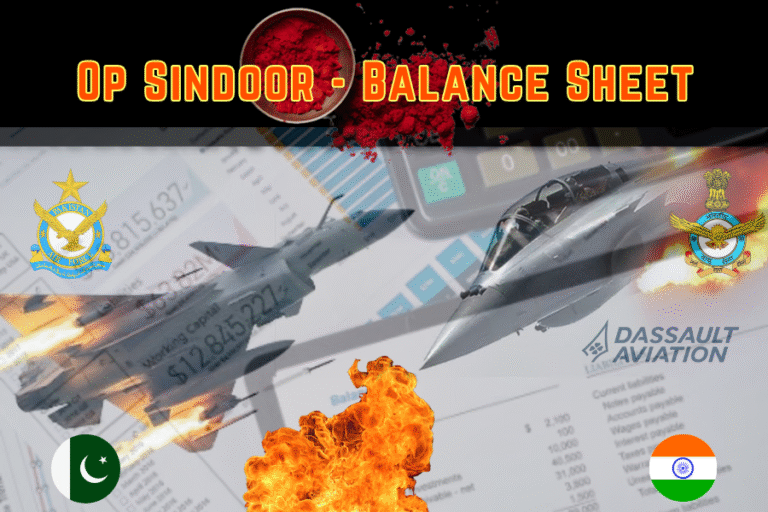(By Khalid Masood)
On the night of 10 to 11 July 2025, the N70 highway in Balochistan’s Zhob district became the site of a chilling act of violence. Armed militants intercepted two Lahore-bound passenger buses, checked passengers’ computerized national identity cards (CNICs), and singled out nine individuals of Punjabi origin. These victims were abducted and later found executed in the nearby mountains of the Sara Dhaka area. This targeted killing, attributed to the Balochistan Liberation Army (BLA), underscores the persistent ethnic tensions and escalating insurgency in Pakistan’s largest yet most volatile province. This attack is a stark reminder of the challenges to national unity and security posed by separatist violence, fueled by long-standing grievances and alleged external interference. This article explores the attack’s details, its historical context, the BLA’s motives, Pakistan’s response, and the broader implications for inter-provincial harmony and regional stability.
I. The Attack: A Brutal Act of Ethnic Targeting
Incident Overview
On 10 to 11 July 2025, near the Balochistan-Punjab border in the Sara Dhaka area of Zhob district, armed militants halted two passenger buses traveling on the N70 highway en route to Lahore. The attackers systematically checked passengers’ NICs, identifying those from Punjab. Nine Punjabi passengers were forcibly removed, taken to a nearby mountainous area, and executed. Their bodies were later recovered and transferred to Rakhni Hospital for medico-legal procedures. Security forces launched immediate search operations, but the perpetrators escaped into the rugged terrain. While no group officially claimed responsibility, the Balochistan Liberation Front (BLF), closely aligned with the BLA, was implicated, consistent with similar attacks in the region.
Modus Operandi
The attackers’ strategy mirrors a recurring pattern in Balochistan’s insurgency: targeting non-Baloch civilians, particularly Punjabis, to sow fear and disrupt inter-provincial connectivity. By checking NICs, the militants ensured ethnic specificity, a tactic rooted in the BLA’s narrative of resisting “Punjabi domination.” The execution-style killings and the attackers’ swift escape highlight their familiarity with the terrain and guerrilla tactics, posing a significant challenge to law enforcement in Balochistan’s vast, under-policed regions.
II. Historical Context: Ethnic Targeting in Balochistan
The July 2025 attack is not an isolated incident but part of a decades-long pattern of violence by Baloch separatist groups targeting non-Baloch civilians, particularly Punjabis, whom they view as symbols of Pakistan’s centralized authority. Since the early 2000s, the BLA and allied groups like the BLF have escalated attacks on civilians, security forces, and infrastructure, driven by demands for independence and control over Balochistan’s resources.
Notable Precedents
- August 2024 (Musakhel District): BLA militants stopped vehicles on a highway, checked IDs, and killed 23 Punjabi civilians, setting vehicles ablaze. The attack, part of the BLA’s “Operation Herof,” coincided with the anniversary of Baloch leader Nawab Akbar Bugti’s death in 2006.
- March 2025 (Jaffar Express Hijacking, Bolan Pass): BLA’s Jeeyand faction hijacked a Quetta-to-Peshawar train, targeting security personnel among 400 passengers. The 36-hour standoff resulted in 31 deaths, including 21 civilians and four soldiers, with all 33 attackers killed.
- May 2025 (Khuzdar School Bus Attack): A suicide bombing targeted an army-run school bus, killing six, including four children. Pakistan accused Indian proxies, though no group claimed responsibility.
- April 2024 (Noshki): Nine Punjabi passengers were abducted from a bus and killed, reflecting the BLA’s strategy of ethnic targeting.
- 2010 to 2015: Attacks on Punjabi teachers, laborers, and settlers, including the murder of Nazima Talib, a Punjabi professor, and the killing of 20 construction workers in Turbat.
These incidents highlight a deliberate campaign to expel non-Baloch residents, disrupt economic activity, and challenge Pakistan’s sovereignty in Balochistan.
III. The Baloch Insurgency: Motives and Methods
Objectives
The BLA, founded in the early 2000s, seeks Balochistan’s independence, citing political marginalization, economic exploitation, and cultural suppression by Pakistan’s federal government. Balochistan, despite its vast natural resources (gas, copper, gold, and the strategic Gwadar Port), remains Pakistan’s poorest province, fueling resentment. The BLA accuses the state of extracting resources without benefiting locals, a grievance exacerbated by the China-Pakistan Economic Corridor (CPEC), which Baloch nationalists view as a tool of external exploitation.
Tactics
The BLA employs guerrilla warfare, suicide bombings, and targeted killings to destabilize the region. Recent years have seen a shift toward sophisticated, large-scale operations:
- Ethnic Targeting: Checking CNICs to identify Punjabis, Sindhis, or Pashtuns, whom the BLA labels “outsiders.”
- Infrastructure Attacks: Bombings of railway lines, gas pipelines, and highways, such as the August 2024 rail bridge attack in Bolan.
- Suicide Bombings: The Majeed Brigade, BLA’s elite suicide unit, has conducted high-profile attacks, including the November 2024 Quetta railway station bombing (32 deaths).
- Coordinated Assaults: The Baloch Raaji Aajohi Sangar (BRAS) coalition, including BLA and BLF, executed 204 joint attacks in 2024, targeting symbolic dates like Pakistan’s Independence Day.
The July 2025 attack reflects this evolution, combining precise ethnic targeting with rapid execution to maximize psychological impact.
IV. Security and Governance Response
a. Immediate Actions
Following the July 2025 attack, Balochistan’s government, led by Chief Minister Sarfraz Bugti, condemned the killings as “barbaric” and vowed to bring the perpetrators to justice. Security forces launched operations in Zhob and Loralai districts to apprehend the attackers, though the rugged terrain and local support for insurgents complicate efforts. The Balochistan government’s spokesperson, Shahid Rind, confirmed the recovery of the victims’ bodies and ongoing rescue efforts for any remaining hostages.
b. Long-Term Strategies
Pakistan’s response to the Baloch insurgency includes:
- Enhanced Security: Increased checkpoints and patrols on inter-provincial routes like the N70 highway, though these are often bypassed by militants.
- Military Operations: Since November 2024, the Apex Committee has intensified operations against the BLA, killing 33 militants in the Jaffar Express incident and 12 in August 2024.
- Development Initiatives: Projects under CPEC, such as Gwadar Port and infrastructure upgrades, aim to address economic grievances, but locals often perceive these as benefiting outsiders.
- Counter-Narratives: The government promotes Balochistan’s integration into Pakistan, countering separatist propaganda, though this is undermined by allegations of human rights abuses, including enforced disappearances.
V. Allegations of External Support: The India Factor
Pakistan has long accused India of fueling the Baloch insurgency to destabilize its western frontier, particularly citing the 2016 arrest of Kulbhushan Jadhav, an alleged Indian naval officer, who Pakistan claims confessed to supporting BLA operations. The July 2025 attack prompted renewed accusations, with social media posts alleging coordination between Indian media, the Baloch Yakjehti Committee (BYC), and the BLA. India denies these claims, calling them “baseless” and accusing Pakistan of deflecting from its internal failures.
Independent analyses note that exiled Baloch leaders, such as Brahumdagh Bugti, have sought support in India, but direct evidence of Indian state sponsorship for specific attacks, including July 2025, remains inconclusive. The BLA’s safe havens in Afghanistan, allegedly supported by Afghan authorities, further complicate the narrative, with Pakistan claiming cross-border collusion.
VI. Impact on Inter-Provincial Relations and Civilian Mobility
Public Sentiment
The July 2025 attack has heightened fear among Punjabis and other non-Baloch travelers, with social media posts reflecting outrage over the ethnic targeting: “What kind of country lets its own people be hunted like this just for being from another province?” Calls for enhanced security on Balochistan’s highways have surged, alongside demands for accountability from provincial authorities.
Economic and Social Implications
The attack disrupts trade and travel between Balochistan, Punjab, and Sindh, critical for Pakistan’s economic cohesion. The N70 highway, a vital link, has become a recurring target, deterring labor migration and commerce. This exacerbates Balochistan’s isolation, reinforcing separatist narratives while straining national unity. Analysts warn that continued attacks could deepen ethnic divides, with Punjabis and others feeling unsafe in Balochistan.
VII. Addressing the Root Causes
The Baloch insurgency stems from legitimate grievances: economic neglect, political marginalization, and perceived exploitation of resources. Balochistan, with 15 million people (6% of Pakistan’s population), generates significant revenue from gas and minerals but remains underdeveloped, with 47% of its population below the poverty line. Human rights groups document state abuses, including 5228 enforced disappearances between 2001 and 2017, fueling resentment.
Recommendations
- Security Enhancements: Deploy advanced surveillance and rapid-response units on highways, leveraging Pakistan’s drone capabilities (Shahpar III, Wing Loong II) for real-time monitoring.
- Dialogue: Engage moderate Baloch leaders and the BYC in talks to address grievances, offering amnesty to non-violent activists.
- Development: Redirect CPEC benefits to local communities through job creation and infrastructure in Balochistan’s interior.
- Counter-Insurgency: Disrupt BLA’s Afghan safe havens through diplomatic pressure on Kabul, while avoiding heavy-handed military tactics that alienate locals.
VIII. Conclusion
The July 2025 bus attack on the N70 highway is a grim milestone in Balochistan’s insurgency, reflecting the BLA’s escalating campaign against non-Baloch civilians and Pakistan’s state authority. The targeted killing of nine Punjabis underscores the ethnic fault lines exploited by separatists, threatening inter-provincial harmony and national cohesion. While Pakistan’s security forces have intensified operations, the insurgency’s roots (economic disparity, political exclusion, and alleged external support) demand a multifaceted response. Without addressing these grievances through dialogue and development, alongside robust security measures, Balochistan risks further violence, destabilizing Pakistan’s southwest and beyond. The government must act decisively to protect its citizens and restore trust, ensuring that the Indus Basin’s shared waters and roads remain symbols of unity, not division.







